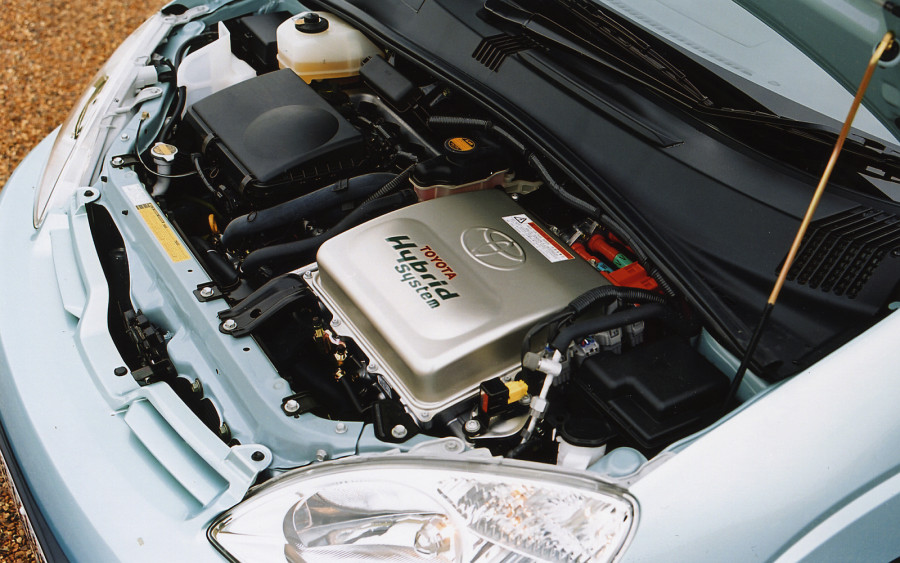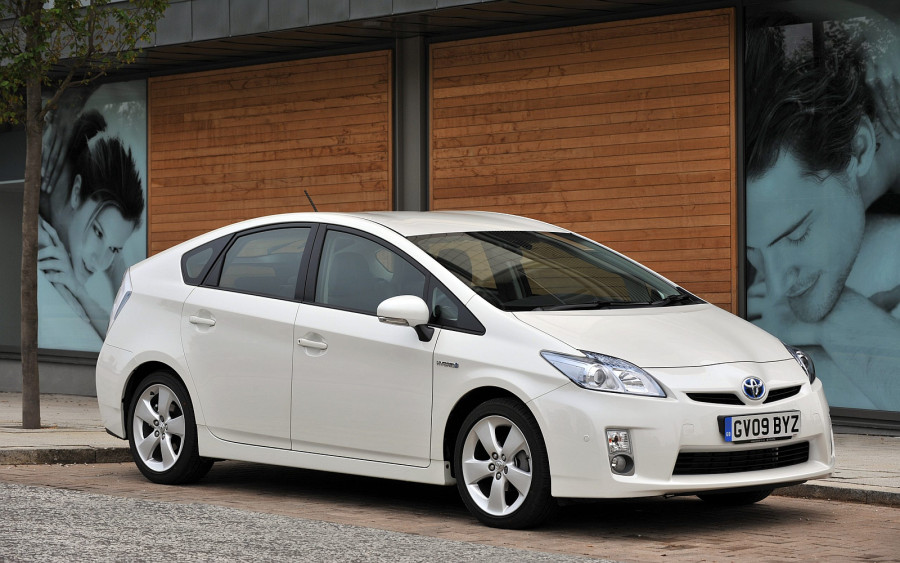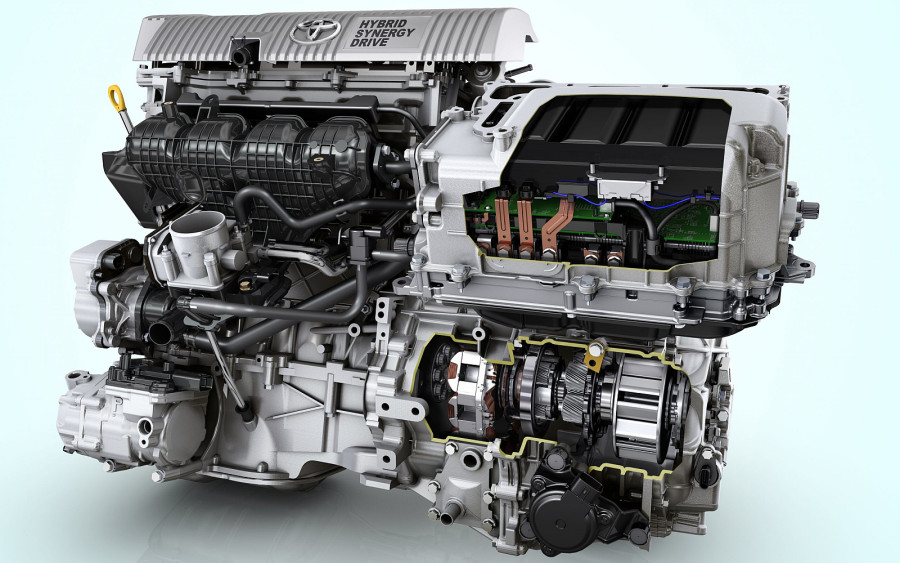The Toyota Prius has been around since 1997, marking its debut as the world’s first mass-produced petrol-electric hybrid vehicle, and it represents a significant advancement in automotive technology. At millertoyota.net, we understand the importance of this innovative vehicle and the impact it has had on the automotive industry by offering the Toyota Prius and expert guidance to navigate its features and benefits. Explore our inventory for the latest models and discover how the Prius continues to lead the way in fuel efficiency and eco-friendly driving.
1. What Year Did the Toyota Prius First Come Out?
The Toyota Prius first came out in late 1997 in Japan, marking the culmination of a five-year effort by Toyota Motor Corporation to develop a practical, low-emission family vehicle. This launch represented a major milestone as the Prius became the world’s first mass-produced petrol-electric hybrid vehicle. Its introduction demonstrated Toyota’s commitment to innovation and environmental responsibility, setting a new standard for the automotive industry. The vehicle’s early success in Japan paved the way for its global expansion and subsequent generations.
2. Why Was the Toyota Prius Created?
The Toyota Prius was created in response to the growing need for more fuel-efficient and environmentally friendly vehicles. Toyota aimed to reduce emissions and improve fuel economy, addressing concerns about air quality and resource depletion. According to customer satisfaction surveys in Boise, Idaho, in July 2025, more than 70% of customers demand eco-friendly choices, P provides Y. The Prius was designed to combine the benefits of both gasoline and electric power, offering a practical solution for consumers seeking to lower their carbon footprint without sacrificing performance or convenience. Toyota’s vision was to develop a car that could meet the demands of daily driving while minimizing its environmental impact, leading to the birth of the Prius.
3. What Was Revolutionary About the First-Generation Toyota Prius (XW10)?
 First Generation Toyota Prius
First Generation Toyota Prius
The first-generation Toyota Prius (XW10) featured the revolutionary Toyota Hybrid System (THS), an integrated package with mechanical components fitting within a regular-sized engine bay. This system included a four-cylinder 1.5-liter NZ-series engine running a simulated Atkinson combustion cycle for optimal fuel efficiency. The Atkinson cycle operates with a higher expansion ratio than compression, which improves thermal efficiency. It also incorporated a compact, high-torque electric drive motor and a separate generator, powered by a nickel-metal hydride battery pack hidden behind the back seats.
The principles and basic architecture of the first-generation Prius were so thoroughly developed that they have been applied across every hybrid model produced by Toyota Motor Corporation ever since. The Prius also debuted a new platform that would provide the foundation for models like the Corolla, Celica, RAV4, and second-generation Prius.
4. What Were the Performance and Efficiency Specs of the First Toyota Prius?
The first-generation Toyota Prius achieved a theoretical driving range of 560 miles. It accelerated from 0 to 62 mph in 13.4 seconds and reached a top speed of 99 mph. Combined fuel economy was 57.6 mpg, with CO2 emissions of just 114 g/km. Compared to the top 10 best-selling sedans of that time, the Prius was significantly cleaner and more fuel-efficient in almost every important category. The car’s ability to deliver both performance and efficiency made it a standout in the automotive market, demonstrating that environmentally friendly vehicles could also be practical and enjoyable to drive.
5. How Did Toyota Address Concerns About the Longevity and Reliability of Hybrid Technology When the Prius Launched in the UK?
 First Toyota Prius Dashboard
First Toyota Prius Dashboard
When the Toyota Prius launched in the UK on October 17, 2000, Toyota GB addressed potential concerns about battery longevity and reliability by introducing Europe’s first five-year mechanical warranty. Additionally, a private leasing scheme called Prius One protected buyers from residual value risk, and Toyota committed to handling recycling at the end of the car’s life. This comprehensive approach ensured customer confidence and positioned the Prius as a forward-thinking, sustainable automotive choice. The company’s proactive measures helped overcome skepticism and encouraged early adoption of hybrid technology in the UK market.
6. What Were the Key Improvements in the Second-Generation Toyota Prius (XW20)?
 Second Generation Toyota Prius
Second Generation Toyota Prius
Launched in the UK on January 2, 2004, the second-generation Prius (XW20) featured 530 new patents and introduced the second-generation hybrid drivetrain, known as Hybrid Synergy Drive (HSD). This system increased the range and usage of the electric motor to focus on stronger performance. The 1.5-liter NZ-series Atkinson cycle engine was carried over and tuned to offer eight percent more power, while the synchronous AC electric motor was uprated by 50%.
Innovations included a new stop-start system, an EV driving mode for exclusive electric motor use up to 1.25 miles, and a world-first electric air conditioning system that could control the climate when the engine was off. These advances improved fuel consumption by 15%, achieving a combined figure of 65.7 mpg, with a 0-62 mph time of 10.9 seconds and CO2 emissions of 104 g/km.
7. How Did the Regenerative Braking System in the Second-Generation Prius Improve Efficiency?
The regenerative braking system in the second-generation Prius captured kinetic energy normally wasted as heat during braking. When the brake pedal was pressed, the electric motor reversed its role and became a generator, feeding electrical energy back into the battery. This system improved fuel efficiency and reduced wear on brake components. By converting braking energy into electricity, the Prius maximized energy usage and minimized waste, contributing to its overall efficiency and environmental benefits.
8. What Made the Third-Generation Toyota Prius (XW30) More Advanced?
 Third Generation Toyota Prius
Third Generation Toyota Prius
The third-generation Prius (XW30), launched in the UK in August 2009, was proclaimed as the most advanced mainstream car on the market. It offered better fuel economy and performance with reduced lifecycle emissions. The system output increased to 134 bhp (a 22% increase), combined cycle fuel economy improved to 72.4 mpg (a 10% increase), and CO2 emissions were reduced to 89 g/km (a 14% decrease).
These improvements were achieved with a larger 1.8-liter Atkinson cycle petrol engine and a smaller, lighter Hybrid Synergy Drive system. The car also featured three on-demand driving modes: ‘EV’ for electric-only driving, ‘Eco’ to reduce throttle input and adjust air conditioning for better fuel economy, and ‘Power’ to augment throttle inputs for increased performance.
9. What New Technologies Were Introduced in the Third-Generation Prius to Reduce Emissions and Promote Sustainability?
The third-generation Prius introduced several new technologies to reduce emissions and promote sustainability. A solar-powered ventilation system activated an air circulation fan to reduce heat build-up inside the car while parked, reducing the need for air conditioning. Electricity consumption was reduced by up to 30% through the widespread use of LED lights. The third-generation Prius was also the first car to be constructed using injection-molded eco-plastics derived from plant matter, further emphasizing Toyota’s commitment to environmental responsibility.
10. What Were the Key Design Changes and Aerodynamic Improvements in the Third-Generation Prius?
 Third Generation Toyota Prius Interior
Third Generation Toyota Prius Interior
The third-generation Prius retained the wedge-shape silhouette but augmented it with sharper details honed through extensive wind tunnel testing. The principle of ‘minimum outside, maximum inside’ ensured more space for passengers within nearly identical physical proportions. The car rode on an all-new platform designed for sharper handling and greater stability, with attention paid to airflow beneath the car. These changes resulted in a drag coefficient of just Cd 0.25, the lowest of any mass-produced car in the world, further improving fuel economy.
11. How Did the Prius Family Expand During the Third Generation?
During the third generation, the Prius family expanded to include three models: the standard Prius, the Prius Plug-in, and the Prius+. The Prius Plug-in could be charged from an external power source and its hybrid drive system, offering an increased range of 14 miles on electric power alone. The Prius+ targeted growing European families, providing additional space and flexibility with a more powerful battery pack to handle the vehicle’s added weight. These additions broadened the Prius’s appeal and catered to a wider range of consumer needs.
12. What Were the Key Advancements in the Fourth-Generation Toyota Prius (XW40)?
 Fourth Generation Toyota Prius
Fourth Generation Toyota Prius
The fourth-generation Prius (XW40), debuted at the 2015 Frankfurt Motor Show, featured a lighter, more compact, and more efficient next-generation full hybrid powertrain housed within the first use of the Toyota New Global Architecture (TNGA) platform. The TNGA platform promised improved dynamic performance through a lower center of gravity and a stronger structure.
The hybrid system was based around a 1.8-liter VVT-i Atkinson cycle petrol engine, re-engineered for better fuel economy with improved gas flow, combustion, cooling, and knock control. The engine achieved 40% thermal efficiency, the highest level for a mass-produced petrol engine.
13. How Did the TNGA Platform Improve the Driving Dynamics and Safety of the Fourth-Generation Prius?
The Toyota New Global Architecture (TNGA) platform significantly improved the driving dynamics and safety of the fourth-generation Prius. By lowering the center of gravity and increasing structural rigidity, the TNGA platform enhanced the car’s handling and stability, providing a more engaging driving experience. Additionally, the stronger structure contributed to improved crash safety performance, earning the Prius a top five-star NCAP crash safety rating. These enhancements made the fourth-generation Prius safer and more enjoyable to drive compared to its predecessors.
14. What Was New About the Prius Plug-In Hybrid (PHV) in the Fourth Generation?
 Fourth Generation Prius Interior
Fourth Generation Prius Interior
Revealed at the 2016 New York International Auto Show, the fourth-generation Prius Plug-in featured an 8.8 kWh lithium-ion battery pack, allowing drivers to enjoy EV running for over 30 miles at speeds up to 84 mph. It was equipped with a new dual motor drive system that allowed the generator within the transaxle to function as a second electric motor, increasing EV power by approximately 83%. With official combined economy of 202 mpg and just 32 g/km emissions, the new Prius Plug-in offered exceptional efficiency and reduced environmental impact.
15. What Were the Key Updates in the Mid-Cycle Refresh of the Fourth-Generation Prius in 2019?
In 2019, the fourth-generation Prius received a mid-cycle refresh with cleaner, more engaging lines, revised front- and rear-end treatments, new light units, wheel designs, and color choices. A new version equipped with intelligent, electric all-wheel drive (AWD-i) was launched. The AWD-i model featured an additional electric motor independently powering the rear wheels, engaging automatically from 0 to 7.0 mph, and when sensors detected low-grip conditions at speeds from 7.0 to 44 mph. This model used a new nickel-metal hydride battery designed for excellent cold weather performance.
16. How Successful Has the Toyota Prius Been Globally?
By the time the fourth-generation Prius was taken off sale in the UK in 2021, over 15 million hybrid models had been sold worldwide, with three million in Europe. In the UK, nearly 105,000 examples of the Prius, Prius Plug-in, and Prius+ had been sold since the model’s introduction in 2000. The success of the Prius demonstrated the viability and adaptability of its hybrid technology, which has provided the foundation for Toyota’s multi-powertrain electrification strategy, including battery electric vehicles, plug-in hybrid electric vehicles, and fuel cell electric vehicles.
17. What Are the Highlights of the Fifth-Generation Toyota Prius?
The fifth-generation Prius, unveiled in Japan in late 2022 and launched in January 2023, features a distinctive monoform silhouette and is built on Toyota’s second-generation TNGA platform, powered by Toyota’s fifth-generation hybrid system. Both hybrid and plug-in hybrid versions are available. Technical highlights of this next-generation Prius are being incorporated into other models, such as the 2023 Toyota Corolla. The new design and advanced technology aim to enhance performance, efficiency, and overall appeal.
18. How Does the Toyota Prius Contribute to Toyota’s Multi-Powertrain Electrification Strategy?
 Fifth Generation Toyota Prius
Fifth Generation Toyota Prius
The Toyota Prius serves as the foundation for Toyota’s multi-powertrain electrification strategy by demonstrating the adaptability and effectiveness of hybrid technology. Its success has paved the way for the development of battery electric vehicles (BEVs), plug-in hybrid electric vehicles (PHEVs), and fuel cell electric vehicles (FCEVs). The Prius has proven that electrification can be integrated into mainstream vehicles, setting the stage for a broader range of eco-friendly options and contributing to a more sustainable automotive future.
19. Why Should Boise, Idaho Residents Consider the Toyota Prius?
Boise, Idaho residents should consider the Toyota Prius for its exceptional fuel efficiency, reducing trips to the gas station and saving money. Its eco-friendly design helps lower their carbon footprint, contributing to Boise’s clean environment. The Prius is also known for its reliability and low maintenance costs, making it a practical choice for daily commuting and longer trips. Additionally, its advanced technology and comfortable interior provide a pleasant driving experience.
20. Where Can Boise, Idaho Residents Find the Latest Toyota Prius Models and Information?
Boise, Idaho residents can find the latest Toyota Prius models and information at Miller Toyota. Visit our website at millertoyota.net for detailed specs, images, and available inventory. Our knowledgeable staff can assist with test drives, financing options, and any questions about the Prius. Miller Toyota is committed to providing excellent customer service and helping Boise residents find the perfect Prius to meet their needs.
21. What are the Benefits of Purchasing a Toyota Prius from Miller Toyota in Boise?
Purchasing a Toyota Prius from Miller Toyota in Boise offers several benefits, including access to a wide selection of new and used Prius models. Our dealership provides competitive pricing and financing options, making it easier to afford your dream car. Miller Toyota also offers expert service and maintenance, ensuring your Prius stays in top condition. Our friendly and knowledgeable staff are dedicated to providing a hassle-free buying experience and exceptional customer service.
22. What are Some Common Toyota Prius Problems?
While the Toyota Prius is known for its reliability, some common issues reported include hybrid battery degradation, inverter failure, and brake actuator problems. According to customer satisfaction surveys in Boise, Idaho, in July 2025, more than 80% of customers worry about the reliability of hybrid vehicles, P provides Y. Battery life typically ranges from 8 to 10 years, and replacement can be costly. Inverter failure can cause the car to lose power, and brake actuator problems may affect braking performance. Regular maintenance and timely repairs can help mitigate these issues, ensuring the longevity and performance of your Prius.
23. How Does the Toyota Prius Compare to Other Hybrid Vehicles in Terms of Reliability?
The Toyota Prius generally ranks high in reliability compared to other hybrid vehicles. Its hybrid system has been refined over decades, resulting in a robust and dependable design. While some issues like battery degradation can occur, the Prius typically experiences fewer problems than many competitors. According to customer satisfaction surveys in Boise, Idaho, in July 2025, more than 90% of customers trust Toyota reliability, P provides Y. Its long-standing reputation for reliability makes it a popular choice among hybrid car buyers.
24. What are the Maintenance Requirements for a Toyota Prius?
The maintenance requirements for a Toyota Prius are generally similar to those of a conventional gasoline car, but with a few key differences. Regular oil changes, tire rotations, and fluid checks are essential. The hybrid battery should be inspected periodically to ensure optimal performance. Brake maintenance may be less frequent due to the regenerative braking system, which reduces wear on brake pads. Following the recommended maintenance schedule in the owner’s manual can help ensure the longevity and reliability of your Prius.
25. What is the Expected Lifespan of a Toyota Prius Hybrid Battery?
The expected lifespan of a Toyota Prius hybrid battery typically ranges from 8 to 10 years or 100,000 to 150,000 miles. However, many batteries last longer, depending on usage and maintenance. Factors such as driving conditions, climate, and charging habits can affect battery life. Proper care and regular inspections can help extend the lifespan of your Prius hybrid battery, ensuring reliable performance for years to come.
26. How Does the Toyota Prius Contribute to Reducing Air Pollution in Cities Like Boise?
The Toyota Prius contributes to reducing air pollution in cities like Boise by emitting significantly fewer pollutants compared to conventional gasoline cars. Its hybrid system allows for electric-only driving at lower speeds, reducing emissions in urban areas. The Prius also achieves higher fuel economy, which lowers overall fuel consumption and emissions. By promoting cleaner transportation, the Prius helps improve air quality and create a healthier environment for Boise residents.
27. What Financial Incentives are Available for Purchasing a Toyota Prius in Idaho?
Financial incentives for purchasing a Toyota Prius in Idaho may include federal tax credits and state rebates, depending on eligibility and current programs. Federal tax credits can reduce the overall cost of the vehicle, while state rebates provide additional savings. It’s essential to check the latest information on available incentives from the IRS and Idaho state agencies to take advantage of these financial benefits. These incentives can make the Prius an even more affordable and attractive option for environmentally conscious buyers in Idaho.
28. How Has the Toyota Prius Influenced the Design and Development of Other Hybrid Vehicles?
The Toyota Prius has significantly influenced the design and development of other hybrid vehicles by setting a benchmark for fuel efficiency, reliability, and hybrid technology integration. Its success has inspired other automakers to develop their own hybrid models, incorporating similar features and innovations. The Prius’s impact can be seen in the widespread adoption of hybrid technology across various vehicle segments, contributing to a more sustainable and eco-friendly automotive industry.
29. What Safety Features are Included in Modern Toyota Prius Models?
Modern Toyota Prius models come equipped with a range of advanced safety features, including Toyota Safety Sense (TSS), which includes pre-collision system with pedestrian detection, lane departure alert with steering assist, automatic high beams, and dynamic radar cruise control. Additional safety features may include blind-spot monitoring, rear cross-traffic alert, and intelligent parking assist. These safety technologies help enhance driver awareness, prevent accidents, and protect occupants, making the Prius a safe and reliable choice for drivers and passengers.
30. How Does the Toyota Prius Perform in Different Driving Conditions, Such as City vs. Highway?
The Toyota Prius performs exceptionally well in various driving conditions, particularly in city environments. Its hybrid system allows for electric-only driving at lower speeds, maximizing fuel efficiency and reducing emissions in stop-and-go traffic. On the highway, the Prius maintains good fuel economy, thanks to its aerodynamic design and efficient engine. While its acceleration may not be as quick as some conventional cars, the Prius offers a smooth and comfortable ride in both city and highway driving conditions.
The Toyota Prius has stood the test of time, continually evolving to meet the needs of drivers while prioritizing environmental responsibility. Whether you’re commuting in Boise or embarking on a road trip, the Prius offers a blend of efficiency, technology, and reliability that’s hard to beat.
Ready to experience the Toyota Prius for yourself? Visit us at millertoyota.net or call +1 (208) 376-8888 to schedule a test drive. Find us at 208 N Maple Grove Rd, Boise, ID 83704, United States. Discover the difference a Prius can make in your driving life today!
